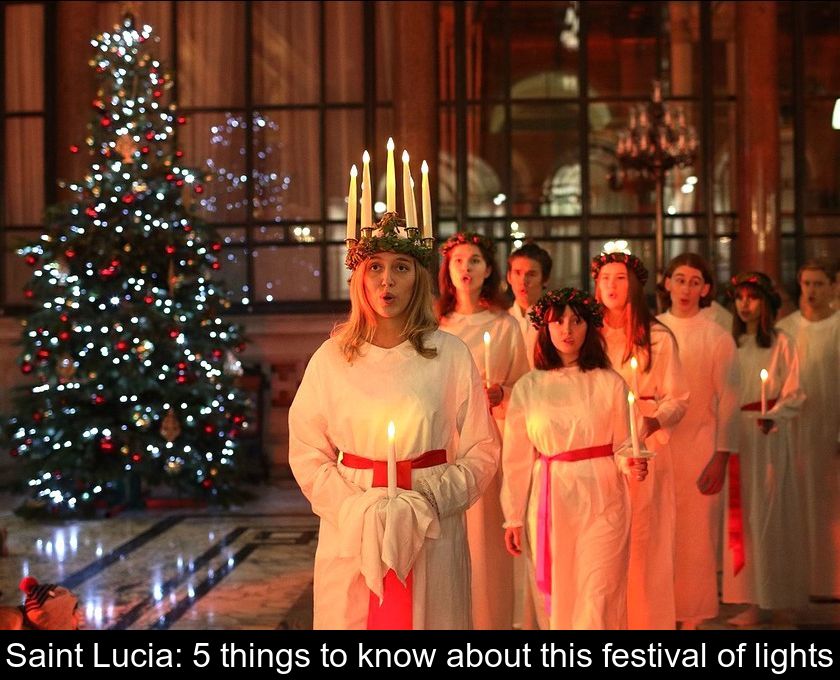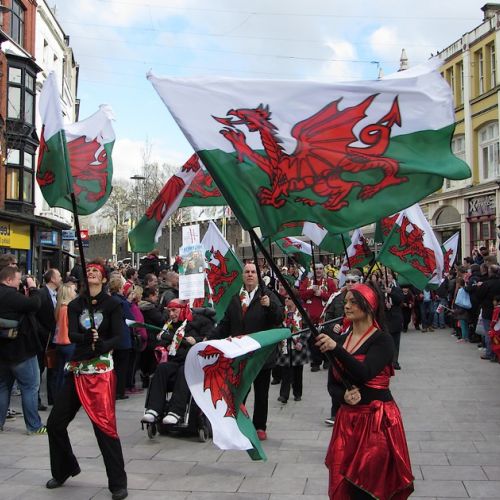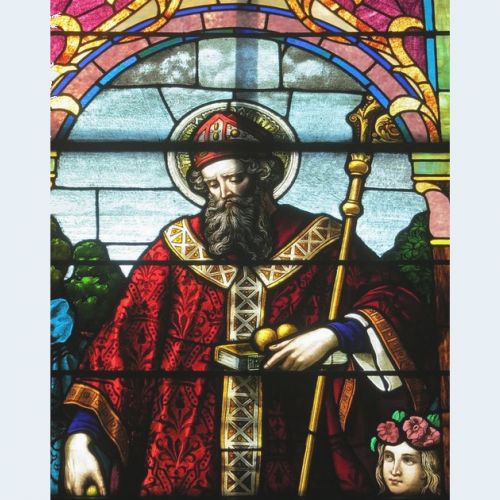Saint Lucia: 5 Things To Know About This Festival Of Lights
St. Lucia's Day, celebrated on December 13, is a particularly important secular tradition in Sweden. This festival in honor of St. Lucy of Syracuse marks the return of light after long days of darkness. Here are 5 things to know about this festival of lights.
1- It is celebrated on December 13.
The Saint Lucia (called Sankta Lucia or simply Lucia in Swedish) is a feast day in honor of Saint Lucia of Syracuse. It is celebrated on December 13, the feast day of this Catholic saint who lived in early fourth century Sicily and died a martyr.
This saint is often depicted wearing her eyes on a plate or in a cup because, according to one version of her legend, she gouged out her eyes to keep away potential suitors and remain faithful to her faith.
In Scandinavia, the story of this saint would have been confused with a legend of Värmland (province of western Sweden) according to which 'a young woman from who knows where traveled all over the lake in a large boat loaded with food that she distributed to all the inhabitants who were starving.'
This holiday also corresponds to the first day when the sun sets later than the day before in the northern hemisphere, as recalled by the saying 'at the holy Luce, the day grows by a leap of faith'.
To note: Saint Lucia is also a Caribbean island so named because it was discovered by a group of French navigators on December 13, 1502! The islanders then chose December 13 as their national holiday.
2- It is a tradition in Sweden... but not only!
St. Lucia's Day is a well-attended tradition in Sweden.
In this country, December 13 is celebrated as much as Christmas with family, school, colleagues or neighbors.
This holiday is also celebrated throughout Scandinavia (in Denmark, Norway, Finland) and in some southern European countries, including Italy, Iceland and Croatia.
3- This festival celebrates the light.
The first name Lucia comes from the Latin lux, lucis, light, and Saint Lucia celebrates the return of light.
In Scandinavia, during the celebrations, a young girl embodies Lucia: she walks at the head of a procession of women all dressed in white with a red cloth sash and wears a crown of candles on her head, while the others have a candle in their hands.
These candles represent not only light, but also the fire that refused to take the life of St. Lucia at the stake.
Moreover, the red belt is another symbol recalling the martyrdom of the saint, who was inflicted with a sword wound to the abdomen.
4- The Christian festival has been brought back to life.
Saint Lucia is a Catholic holiday dating back to the Middle Ages. But today, it has lost some of its religious character.
In Scandinavia, this tradition has continued even after the Protestant Reformation of the 1520s and 1530s. In these countries, December 13 symbolizes the victory of light over darkness.
In Sweden, this holiday was revived in a modern form in 1927 by a Stockholm daily (the Stockholms Dagblad). This newspaper organized the first official procession of Saint Lucia, with the election of a Lucia. Today, most towns in Sweden elect a Lucia every year, as do schools and even companies. Lucia contests' are organized at the local but also national level!
This festival is the occasion to gather in public places, schools, companies, hospitals... In the streets, young girls dressed as Lucia parade and distribute coffee and saffron or ginger buns.
The girls in white dresses and red sashes are accompanied by boys dressed as Wise Men headed with pointy hats dotted with golden stars.
All sing traditional songs and on this day, concerts are given in the churches. These Scandinavian songs are about light overcoming darkness. They have evocative titles such as 'Night walks with heavy steps', 'Saint Lucia, shining illusion' or 'Outside it is dark and cold'...
5- The Saint Lucia arrives in France.
In France, Lucia of Syracuse is a rather unknown saint, except in some regions like Corsica.
The city of Montbéliard celebrates this saint every year during the traditional Défilé des Lumières, on December 13.
On the other hand, in the city of Lyon, the Festival of Lights held on December 8 is dedicated to the Virgin Mary (Immaculate Conception) and not to Saint Lucy...
In Alsace, another character the 'Christkindel' wearing a white dress and a crown of light has long replaced Santa Claus!
Even if this tradition is not very rooted in our country, Saint Lucia is celebrated every year by the Swedish church in Paris (9 rue Médéric, Paris 17e).
This celebration has even reached the French Riviera as it is usually held during the Christmas market in Nice!











